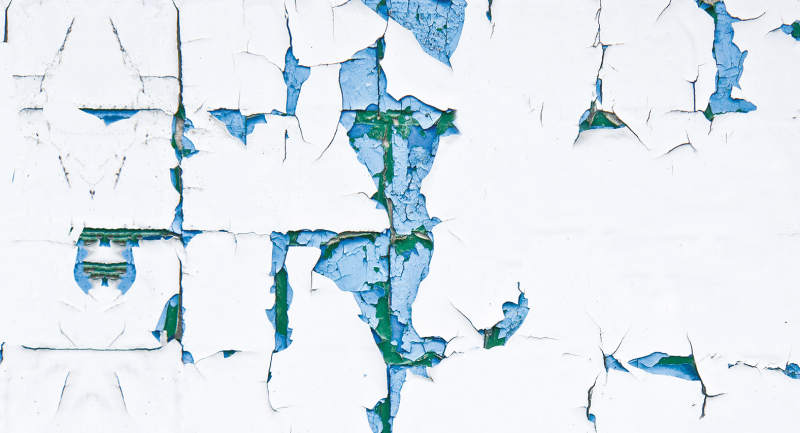
This Dalit History Month, The Dalit Truth is one of the many releases we’re spotlighting to celebrate and honor Dalit stories and discourse. Be it the framing of the Indian Constitution, making the Green Revolution a roaring success, or overcoming obstacles and hurdles that are overlooked by many, K. Raju illustrates the Dalit resilience beautifully in this book. Read an excerpt from The Dalit Truth to get a glimpse into this amazing book!
Across the country in Dalit localities today, statues of Dr Ambedkar—holding the Constitution of India in one hand and showing the way forward to the nation with the other—are a common sight. The Dalits not only own Ambedkar but also the Constitution, as they consider it as ‘Ambedkar’s Constitution’. This volume examines how far the constitutional promises made to the Dalits have been fulfilled and how far the Dalits have progressed on the way shown by Ambedkar. The Dalits are among the world’s largest group of people with a long history of discrimination against them. In their quest for equality, as promised by the Constitution, they have been waging relentless battles against the caste system.
The essays in this book are about those battles. This book is set in contemporary times, when the political mobilization of the Dalits is following a trajectory that the founders of the Constitution would never have expected. Though the Congress party, in partnership with Ambedkar, had formulated the Constitution, and brought out policies, programmes and legislations aimed at their social, economic and political empowerment, the Dalits are drifting away from the Congress in a few states. Some critics argue that it is the Congress that is drifting away from the Dalits, with Manuwadi parties making inroads there. This volume tries to objectively examine the truth and falsities that are influencing the political mobilization of the Dalits. This book has been influenced by my own career as a former civil servant and current Congress leader, and my life as a Dalit. In over three decades as a civil servant, I have had the opportunity to listen to the small and big voices of the Dalits, partake in their pain and celebrate their victories with them.
As a Congress leader, I could closely fathom the realities of politics where the Dalits have a stake. It was with this in mind that I invited thinkers who have the courage of conviction to speak the truth to contribute essays for this book. The truth some of them speak may be unsettling to a politician, whether Congress or non-Congress. It is an attempt to engage with a variety of intellectuals on Dalit lives and politics, and to acknowledge the Dalit truth. Though I strongly believe that the Congress remains the best hope for Dalit emancipation, none of the essays in this book has been ‘censored’—including those critical of my party.
The book’s inquiry into Dalit lives takes you through to the Dalit truth. There are many things which are routinely said about truth: that it is naked and it hurts; that it cannot be hidden for too long; that it prevails. But one thing which is not often said is that it always bears the burden of the past with unflinching grace. It might reveal something ugly, dull or even obvious, but it always holds its head high elegantly since it has nothing to hide. Truth remains plain and solid in its transparency. Yet societies have always had an unsaid preference for lies.
Unlike truth, which can be uncomfortable, lies offer a tempting simplicity. They stand seductively in the corner, promising false liberation from the burden of untangling the complex web of the past. But the salve of lies is temporary. Along with being divisive, lies negate history so that the dominant classes, which are mostly responsible for fabricating them, continue their hegemony. The truth fights against forgetting, while lies encourage it. To comprehend any socio-political phenomenon, the truth must be unravelled layer by layer, like the age-old metaphor of peeling an onion to reach the core.
This metaphorical onion takes us through the layers of human and personal history to arrive at the nucleus. Over a period of time, these shiny layers of lies multiply. Each dominant regime contributes another layer of cover-up, making the quest for truth cumbersome. But the unalloyed truth remains buried underneath the palimpsest of time, mummified without decay.
And what is the truth of Dalit life? It is that in society’s reparation attempts, there is exclusion hiding behind the pretense of inclusion. It is the dominant class’s insecurity and obsession for power which makes them rob the Dalits of opportunities. The primordial lie, which forms the very basis of the Varna system, is that some are born ‘higher’ than the others. This leads to compulsive, draconian, ever-increasing lies, passed off as ‘divine will’, hiding the truth that the Dalits have been stripped of opportunities related to education, employment, wealth and dignity for centuries.
While this injustice has been at the heart of the Dalit truth, there is the other truth as well: that parallel to the stories of agony and despair of the Dalit life, there are also ones of extraordinary resilience, triumph and meaningful contribution to India and the world.
The ability of Dalit individuals to overcome adversities is so profound that it can be held as an example for future generations. The Dalits, even while being crushed by society and the state, toiling under poverty, apply their remaining energies to the development of the nation. And what better way to teach inclusivity than to celebrate the contributions of all great Indians from all communities?
Take, for example, the first Dalit female graduate of India, and one of the fifteen women members of the Constituent Assembly, Dakshayani Velayudhan. A true Gandhian, she did not hesitate to contradict Gandhi’s stand in favour of Ambedkar’s on various occasions.1 She had great determination for the Dalit cause and felt the need to lay a strong foundation for the nation. And yet, the loud lies of the dominant voices have muffled Dakshayani’s truth to a great extent.
Much before Dakshayani Velayudhan, another Dalit woman showed the world great courage and grit. Her name was Jhalkari Bai, and she showed exceptional strength and skills from an early age. In the famous battle against the British in 1857, she disguised herself as the rani of Jhansi and fought a fierce battle against British forces, facilitating the rani of Jhansi’s discreet exit from the battlefield.2 Lakshmibai’s prowess is undeniable, but the fact that Jhalkari Bai’s contribution was kept hidden for so long raises many questions.
In the history of our country, there are many instances when the truth of Dalit valour, wisdom and sacrifice was pushed under the tarp of caste-related lies. Consider Matadin Bhangi, the man responsible for awakening the conscience of Mangal Pandey. Matadin was the one who pointed out the hypocrisy of the social order which didn’t allow Pandey to accept water from his hands due to his ‘low caste’ but compelled him to bite the end of the bullets smeared with cow and pig fat. Unfortunately, for centuries after 1857, Matadin’s truth was purposefully hidden. Similarly, Udadevi and Makka Pasi, the Dalit couple martyred during the First War of Independence, were never remembered.
Ambedkar, one of the greatest figures in Indian history, is himself a story of success. The leading voice on the Indian Constitution, and a powerful leader safeguarding Dalit, women and minority rights, Babasaheb remains a beloved son of the soil. His understanding of people was truly unparalleled. He is cabined as a Dalit icon, but the truth is that his influence extends far beyond his caste, and even beyond India. He was a once-in-a-generation thinker, an advocate of a new social order that recognizes liberty, equality and fraternity as fundamental tenets of life. Also, look at Babu Jagjivan Ram. He stands out as a key figure with his share of truths while bearing the burden of lies.
A Dalit man from Bihar, he became a towering figure in the history of India, not just as a Dalit icon but as an able administrator. He ensured the implementation of constitutional promises to the Dalits after Ambedkar resigned from Nehru’s cabinet. His contributions to the Green Revolution were remarkable, helping bring food security for the first time to the hungry millions in Indians across the social spectrum. He served as defence minister during the 1971 Indo–Pak war and was instrumental in the creation of the ‘Joint Command’ of Bangladesh and Indian forces for the final assault which led to victory. Damodaram Sanjeevaiah became the first Dalit chief minister of an Indian state, Andhra Pradesh (1960–62), when he was just forty years old.
In 1962, Sanjeevaiah became the first Dalit leader to become the All India Congress Committee president (1962–63). He also served as Union minister for labour and employment (1964–66). As the Andhra Pradesh CM, he introduced 27 per cent reservations for OBCs in government jobs and educational institutions, long before the Mandal Commission came into the scene. As Union minister, he introduced the Payment of Bonus Act and pensions for the aged. He is remembered for his impeccable integrity and honesty. People of Andhra Pradesh fondly remember him as a chief minister who, after stepping down from office in Hyderabad, took a public transport bus to reach his humble house in his native village in the Kurnool district of Andhra Pradesh. An Indian Dalit is a proud citizen who believes in egalitarian assimilation of cultures—an idea alien to the hubris of those in power.
Dalits can never be accused of sub-nationalism. This sense of national integrity is one of their most remarkable contributions to India. This book is our effort to strip the lies, the philosophical sidestepping and the self-serving excuses that have obscured the beating heart of the Dalit truth. The essays offer pathways of hope for the Dalits to realize the promises that we, the people of India, made to them when the Constitution was adopted on 26 November 1949. This book is a companion to the seekers of truth who wish to dismantle the architecture of lies designed to keep the Dalits in their place.
Get your copy of The Dalit Truth this Dalit History Month now!









